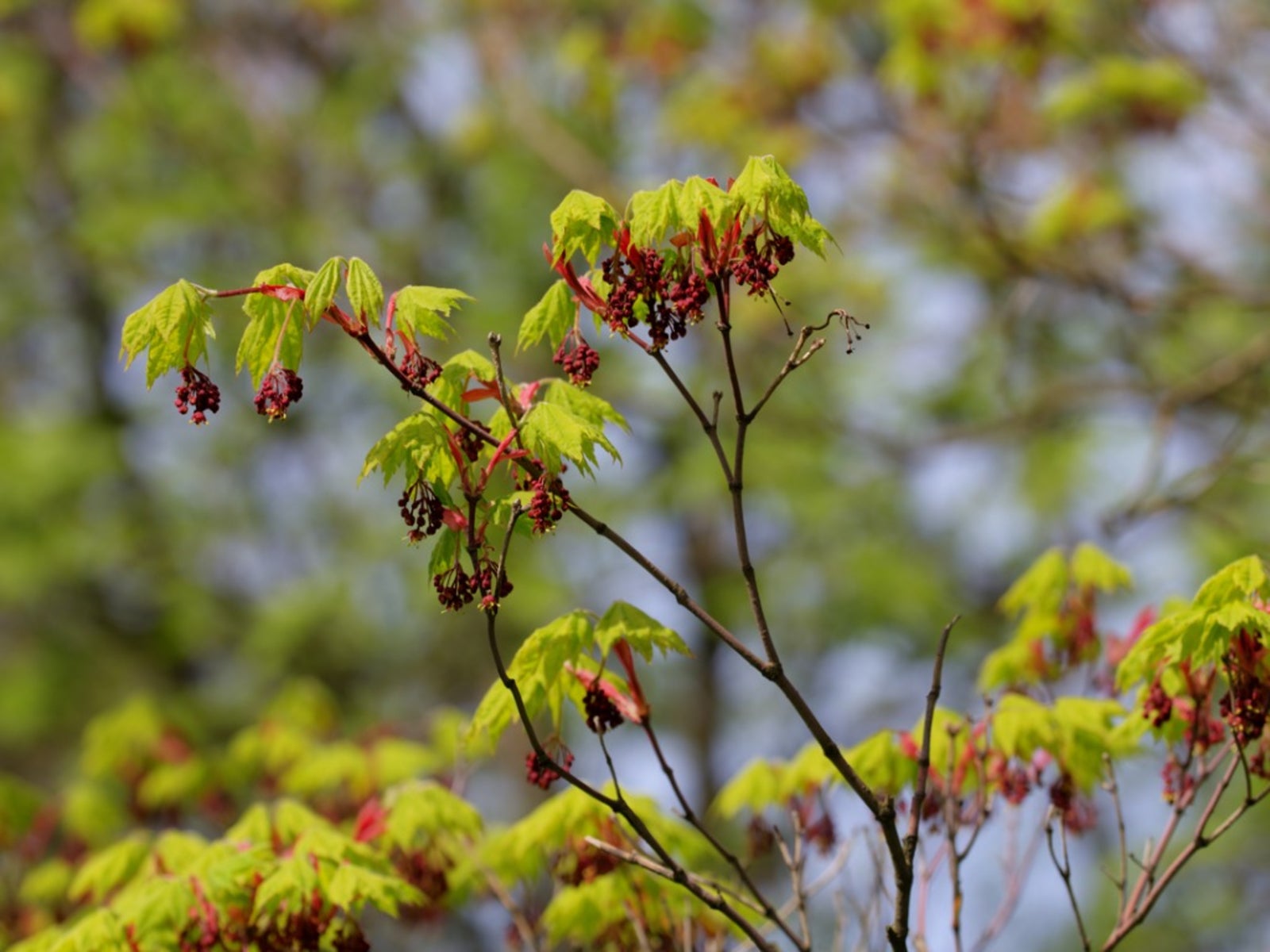What Is A Korean Maple – Learn How To Grow A Korean Maple Tree


You’ve heard of silver maples and Japanese maples, but what is a Korean maple? It’s a small maple tree that makes a wonderful substitute for Japanese maple in colder regions. For more Korean maple information and tips on how to grow a Korean maple, read on.
What is a Korean Maple?
Korean maple trees (Acer pseudosieboldianum) look quite a bit like the popular Japanese maples, but they are hardier. The trees thrive in USDA plant hardiness zones 4 through 8. The tree is native to China and Korea, where it grows in forested areas. This small, specialty maple matures to about 25 feet tall (8 m.) and wide.
Korean Maple Information
The Korean maple is a delicate tree with some exceptional features. In spring when new leaves open, they are soft and downy. Each has some 10 lobes and is about as wide as your hand. The blossoms appear in spring as well, hanging in surprising purple clusters. They develop into the tree’s fruits, winged samaras, in summer. A big attraction of the tree is its spectacular fall color. The dark green leaves flame into shades of orange, purple, yellow, red, and crimson as the weather gets chilly in autumn.
How to Grow a Korean Maple
If you want to grow a Korean maple, find a site with moist, organically rich soil and excellent drainage. Korean maple trees will not be happy with wet feet. You can plant these beauties in a full sun area or a spot with sun-dappled shade. Don’t pick a site that is hot and dry.
Caring for Korean Maples
Once you have your tree started, caring for Korean maples includes watering. These are quite thirsty trees and require regular irrigation. Provide Korean maple trees with water every week throughout the growing season but offer extra water during dry periods. You’ll also need to protect these trees from strong winds. Protection is also required in the coldest zones. You won’t have to worry much about insect or disease problems. While the trees are susceptible to stem canker, leaf spots, and anthracnose, they do not have any serious pest or disease issues.
Gardening tips, videos, info and more delivered right to your inbox!
Sign up for the Gardening Know How newsletter today and receive a free copy of our e-book "How to Grow Delicious Tomatoes".

Teo Spengler is a master gardener and a docent at the San Francisco Botanical Garden, where she hosts public tours. She has studied horticulture and written about nature, trees, plants, and gardening for more than two decades. Her extended family includes some 30 houseplants and hundreds of outdoor plants, including 250 trees, which are her main passion. Spengler currently splits her life between San Francisco and the French Basque Country, though she was raised in Alaska, giving her experience of gardening in a range of climates.
-
 Looking For Plants To Give You The Soft And Fuzzies? Try These 5 Fuzzy Leaf Plant Options
Looking For Plants To Give You The Soft And Fuzzies? Try These 5 Fuzzy Leaf Plant OptionsLovers of texture, drama, silver foliage and tactile plants will adore these special sensory garden additions. These fuzzy leaf plant options will leave you all aglow
By Susan Albert
-
 Get Ready For A Summer Of Hummers! Grow These Full Sun Hummingbird Plants and Flowers
Get Ready For A Summer Of Hummers! Grow These Full Sun Hummingbird Plants and FlowersIf you’re lucky enough to enjoy a sunny backyard, make sure you are maxing out on your pollinator opportunities and grow these full sun hummingbird plants and flowers
By Tonya Barnett